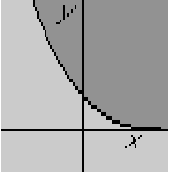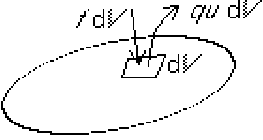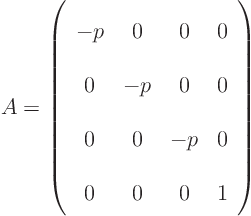|
|
|
|
|
Next: 18.7 Changes of Coordinates |
|
Classification groups partial differential equations with similar properties together.
One set of partial differential equations that has a unambiguous
classification are 2D second order quasi-linear equations:
The classification for these equations is:
ExampleQuestion: Classify the equation

Solution:
Identify the coefficients and find the discriminant:

So it is parabolic for

It is elliptic ifis greater than the value above and hyperbolic if
is less.
Graphically:

ExampleQuestion: Classify the potential equation for compressible flow for an airfoil:

Hereis the speed of sound, not to be confused with the
in the generic partial differential equation. Also
and
are the velocity components
and
in the
and
directions. Discuss the associated physics.
Solution:
The discriminant is

or in terms of velocity and speed of sound:

Multiplying out gives
![\begin{displaymath}
a^2[a^2-(u^2+v^2)]
\end{displaymath}](img838.gif)
Note that the term within square brackets is positive if the magnitude of the speed of sound is greater than the magnitude of the velocity. That is subsonic flow, with a Mach number

less than 1. The equation is then elliptic. Conversely, if the flow velocity is greater than the speed of sound, supersonic flow, then the equation is hyperbolic.Consider a picture of transonic flow around an airfoil:

The subsonic region does indeed behave elliptic. There are smooth solutions and an unlimited region of dependence. Numerically, this region must be solved through simultaneous global solution.The supersonic region behaves hyperbolic. There are singularities like expansion fans and shocks. The propagation of Mach lines is given by the so-called Mach-angle. The solution can numerically be found station by station using a marching scheme.
The general ![]() -dimensional second order quasi-linear second order
equation is:
-dimensional second order quasi-linear second order
equation is:

In index notation, the n-dimensional equation can then be written as:
ExampleQuestion: Find matrix
for the generic two-dimensional equation

Solution: Writing the equation in
-dimensional form gives:

Comparing with the equation above,

,




, and


. So the matrix
is here:

Classification is based on the eigenvalues of ![]() :
:
ExampleQuestion: Figure out why that is consistent with what we defined for the two-dimensional case,

Solution: From linear algebra it is known that the determinant of a matrix equals the product of its eigenvalues. In this case there are two eigenvalues. Their product is the determinant:

According to the-dimensional classification scheme, the equation is parabolic if an eigenvalue is zero. But then the product
of the eigenvalues will be zero. So
is zero too, and that also makes the equation parabolic according to the two-dimensional classification scheme.
According to the
-dimensional classification scheme, the equation is elliptic when the two eigenvalues are of the same sign. But then the product of the eigenvalues is positive,

0. That makes
negative in agreement with the two-dimensional classification.
The only remaining possibility is that the eigenvalues are of opposite sign. That makes their product
negative, again in agreement with the two-dimensional classification.
ExampleQuestion:

The equation

is a generic wave equation, withthe displacement from equilibrium. The first term is the substance acceleration at a point. The second term represents net force per unit volume due to elastic distortion. In it,
could be the Young's modulus. The third term would be a distributed force that wants to keep the substance in the equilibrium location. The forth term would be a viscous damping. The right hand side represents a distributed force per unit volume. Classify this equation.
Solution:
Write out the equation using the definition of nabla:

Then

while for any vector,

The equation is therefore

Now identify the highest derivatives of
:

Find the coefficient matrix


The eigenvalues are






and

1. Since all eigenvalues except one are of the same sign, it is hyperbolic.
The equation